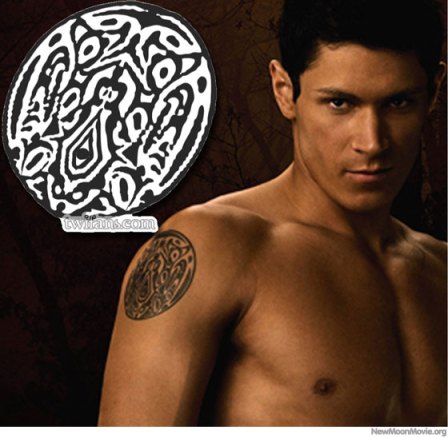[Part of a series discussing the essays in A New Dawn edited by Ellen Hopkins. These posts may contain spoilers about all four Twilight novels and Midnight Sun.]
I liked Gerber immediately, since she began her essay by confessing her membership to Team Jacob. If this blog had wider readership, I would probably start getting hateful comments right about now. Let me just reassure my dear friends on Team Edward, I think Bella and Edward were clearly destined for each other for all eternity, etc, etc, ad infinitum…ad nauseum… I just like ’em tall, dark, warm-hearted, and warm-blooded, I guess.
Now that that’s out of the way, lets talk about wolves. “Dancing with Wolves” discusses the ubiquity of wolves in the legends of cultures around the globe. From the number and variety of legends named by Gerber, the humans affinity for wolves is patently obvious. The author quotes Daniel Wood’s book Wolves, saying “these animals are “mirrors, reflecting the proximity of the primitive in human nature,” and adds a number of examples of how wolf and human social structure are similar.
The essay then discusses the prevalence in Native American legends, in particular those of the Quileute tribe, and how they relate to wolf imagery in the Twilight Saga. The legends that Jacob tells Bella at First Beach in Twilight are all authentic Quileute legends with the exception of the story about “the cold ones.” Originally, Jacob and his werewolf brethren played a much smaller role in the saga. It was only when Little Brown offered Meyer a preemptive multi-book deal, that she added the werewolf/shapeshifter embellishment upon the Quileute wolf legends in order to create the Bella-Edward-Jacob triangle.
Gerber discusses some wolfy themes that permeate Jacob and the other Quileute’s character development. Two of the most common associations with werewolves are puberty/coming of age and good/evil or evolved/primitive man duality.
Jacob, like most teenage boys, has a crisis of identity when his body begins to change. These emotions are enhanced by the werewolf metaphor. A teens body turns against them and they become a kind of half-and-half monster. Gerber points out that calling on wolves is an integral aspect of some coming of age rituals among tribes in the Olympic peninsula, which parallels the formation of the Twilight wolfpack, if not quite as literally.
Another common werewolf theme deals with good vs. evil duality. Sometimes it’s presented as evolved vs. primitive duality as well. The explosion of a human into a monstrous wolf represents an escape of either the evil or primitive, Id-like nature inherent in human beings. This jives with a Cherokee legend related by Gerber that tells of a battle between two wolves that goes on inside us at all times. One wolf is good, while the other is evil. It is up to us to chose which wolf will win and guide our conduct.
Initially, Jacob and several of the other pack members resent their destiny. They reluctantly take on the burden of being Protectors, but they are unhappy the proximity of the Cullens has robbed them of their fully human identities. Jacob settles uneasily into his new form, but he still rejects his full destiny. He refuses to be Alpha and clings to Bella, urging her to forget Edward and chose him instead.
Gerber likens Jacob’s character trajectory to that of a Spirit Journey, he “has to let go of who he thought he was so he can become who he is meant to be.” When Bella and Edward marry, Jacob attempts to avoid what is admittedly a pretty tough destiny by sinking into his wolf form and running away. It’s not until Jacob returns, claims his rightful place as Alpha, and fights beside the Cullens to protect Bella and her baby that he walks his true path. In the end, Jacob is rewarded by imprinting on Edward and Bella’s half-breed daughter, Nessie.
While this essay focused on the wolf/human connection and the ways in which Meyer’s Quileute werewolves help us to explore various philosophical themes, there was really no discussion of how the Twilight Saga has affected the real Quileutes or the reception of Twilight in other First Nations groups. It’s not a snark, since Gerber doesn’t claim to do that. She very specifically sets out to talk about wolves in Twilight, not Native Americans in Twilight. Hopefully I can come up with more on this issue later.

